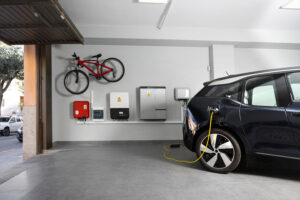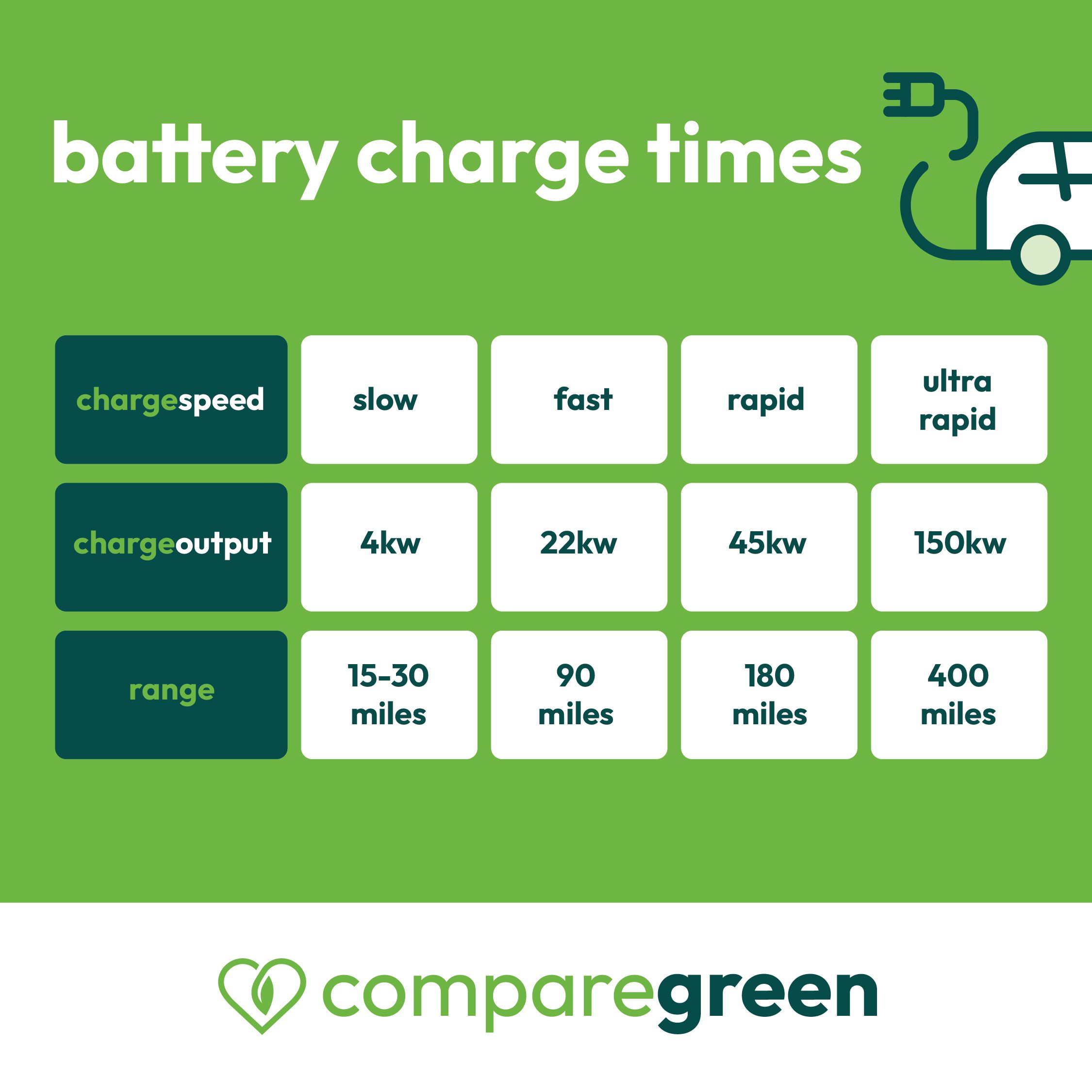Charging at home - what you need to know

Speed, A/C and DC
EV charging speed is measured in kilowatts (kW). The higher the kW the faster the charge.
Alternating current (AC) is what you get from the mains at home. EV internal charging systems tend to be able only to take up to 22kW on A/C.
Public rapid chargers are direct current (DC) and can go far higher – up to 150kW and more. Broadly speaking:
- A 3-pin ‘Granny charger’ plugged into the mains will give 9-10 miles per hour
- 5kW charger will offer up to 17 miles per hour
- 10kW will give up to 35 miles of charge per hour
- 22kW, 60 miles of charge per hour
Rapid and ultra-rapid chargers are generally available at public charging sites, and these can offer up to 150 miles of charge per hour.
Smart chargers
As of 2022, the UK government mandates all newly installed home chargers must be ‘smart’. Many installed before this date were cheaper but could not be programmed to take advantage of an electric car charging tariff for example.
Broadly, smart chargers can be programmed to only charge your vehicle during off-peak hours between 08:00-11:00 in the morning and 18:00-22:00 in the evening. This is to reduce peak demand on the national electricity grid.
You can still override the setting. If you were planning an overnight run to Europe and wanted a full charge at 22:00, you could simply tell the app to charge to 100% through peak time. If you don’t, the system will switch on at or about 22:00 and charge your vehicle overnight.
Those on an EV tariff can fine-tune your charging according to your requirements. This can mean significant savings to you in the long term.
Choices of charger
The first thing to remember is, particularly if you are buying an older, used EV, the car might only be able to take up to a certain amount of A/C charge.
Check what the limit is – if it can only take up to 7.5kW then it will only make sense to install a single phase system. If newer and it can take up to 22kW, then consider upgrading your home electricity supply accordingly.
Will you be on a driveway or in your own garage?
If you have a driveway, this is simple to arrange. The installer will wire the charger into your fuse box and install it where you need.
Will you be in a car park or park on the road?
You may be among the 17 million UK households that don’t have a driveway or live in flats. This can make EV charging difficult.
If you live in a block of flats you can negotiate with the owner or managers of the property. There are currently government grants to pay for these. Often, installation should be possible as it helps future-proof the property for the owners.
For those who live in terraced housing with no driveway, this can be problematic. If you can prevent the cable from being a trip hazard or being at head height, you can install charger to cross the pavement. There are companies that install systems like this.
What if you can’t park outside your house the night before a trip because you lack dedicated parking? In many cases, you might not be able to get round this problem.
How far will the charger be from the fusebox?
Some people have parking at the bottom of their rear gardens. The cabling and labour in getting the cabling to that point will cost more than a classic semi-detached house where the car pulls up by the side of the house.
Does your house have a 100-amp fuse in the fusebox?
You can check the fusebox to see. When a new meter is being installed – a smart meter for example – the energy company may well upgrade your fusebox as part of the deal. This can cost you nothing.
Some properties have very old electrical systems. This may be a major obstacle to installing a charger, but an upgrade to the electrical system may make sense to future-proof it (and ensure the safety of your family anyway).
Can you get 3-phase A/C?
For the fastest mains charging (22kW) you must have three phase alternating current (A/C).
If you are on single phase A/C you can get up to 7.5kW of power into the car. Most cars can handle this and it means you can install the charger for as little as £500. Batteries are getting bigger though and you may want a faster charge. That may mean three-phase A/C.
Though most households in the UK are on single-phase A/C they are close enough to the three-phase network to plug in quite cheaply. The easiest way to check whether you are on it is to see if you have three, 100A fuses in the fusebox.
Installing can cost a lot more but if you have a car with a long range battery and regularly do large mileages, then it could mean you can get a fast charge as and when you need one.
Do you have or want solar?
If you have your car at home during the day, then a solar array could make electric car charging cost £0 on a sunny day. With VAT on solar arrays removed and many householders looking to tackle their energy bills, this is one upgrade to your home’s electricity that could hit your bills even further.
V2x
V2x means that your EV would be part of your home energy network. It can both be charged and discharge energy either into your home or to the national electricity grid. Vehicle to grid (V2G) and vehicle to home (V2H) are both known as V2x.
Not all EVs have this facility but some do. Instead of installing an expensive home battery you have a bidirectional charger that would let your car power your home at peak hours. One energy provider – Ovo Energy – is piloting V2G just now and would pay you to use energy from your car battery at peak periods, while guaranteeing you the charge you need when you next use the car.
There are issues. If you went fully off-grid or left your car to sell energy every winter’s evening, each charge and discharge would degrade the battery incrementally in the same way as it would if you charged/discharged in a long drive. No studies have been done into the effect of this on car resale values but if someone used software to find out how many cycles the car battery had had, then even if it had low mileage the battery will behave as if it had done the equivalent mileage of a car driven a lot more. It would be like running your ICE car engine as a generator when it’s parked up with all the inherent wear and tear.
That said, a car would justify its value if you hardly used it, leaving it as part of your home energy system while working from home for example. It would effectively be a dual use battery system that can power your home for up to two days in the event of a grid outage as well as a form of transport.
Check out more details on EV tariffs including V2X.



